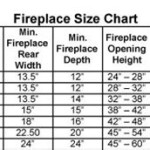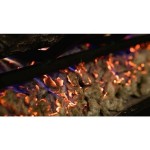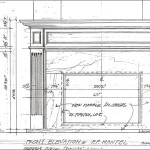Understanding Electric Fireplace Front Heat Vents
Electric fireplaces offer a convenient and aesthetically pleasing heating solution for homes and offices. Unlike traditional wood-burning fireplaces, they do not require venting or fuel storage, making them easier to install and maintain. A key component of many electric fireplace designs is the front heat vent, which plays a crucial role in distributing warmth efficiently and safely throughout the room.
The primary function of an electric fireplace is to provide supplemental heat. Electric fireplaces achieve this by using an electrical heating element, often a fan-forced heater, to warm the air. The heated air needs a pathway out of the fireplace unit and into the surrounding space. This is where the front heat vent becomes essential. It allows the warm air to exit the fireplace unit and circulate into the room, effectively raising the overall temperature. The efficiency of this process depends on the design and positioning of the vent.
The design of the front heat vent can significantly impact the performance of the electric fireplace. Vents are typically designed to direct heat outwards, preventing excessive heat build-up within the unit itself. The size and configuration of the vent slots or openings influence the airflow pattern. Some vents are designed to distribute heat in a broad, even pattern, while others focus the airflow in a more concentrated direction. Materials used in the vent construction are also important, typically featuring heat-resistant metals or plastics to withstand the warm air emitted.
Optimizing Heat Distribution with Front Vents
The positioning of the front heat vent is critical for effective heat distribution. Most electric fireplaces are designed with the vent located at the bottom or lower portion of the front panel. This strategic placement takes advantage of natural convection principles. Warm air rises, creating a natural circulation pattern that draws cooler air from the floor level into the fireplace, where it is heated and then expelled through the vent. This continuous cycle ensures that the room is heated relatively evenly, avoiding cold spots and maximizing the heating efficiency of the unit.
Different electric fireplace models may incorporate different vent designs to optimize heat distribution for various room sizes and layouts. Some units feature adjustable vents that allow users to direct the airflow up or down, providing greater control over the heating pattern. This is particularly useful in rooms with varying ceiling heights or areas that require more targeted heating. Other models utilize wider vents or multiple vent openings to disperse the heat more broadly across the room.
The location of the fireplace within the room also affects the effectiveness of the front heat vent. Placing the fireplace in a central location allows for better air circulation and more even heat distribution. Obstructions, such as furniture or curtains, can block the airflow from the vent, hindering its ability to heat the room efficiently. Therefore, it is important to ensure that the area around the fireplace is clear of any obstacles that could impede airflow.
Ensuring Safety with Front Heat Vents
While the primary function of the front heat vent is to distribute warm air, it also plays a vital role in ensuring the safe operation of the electric fireplace. By allowing heat to escape, the vent prevents excessive temperature buildup within the unit, which could potentially damage the internal components or create a fire hazard. The vent design minimizes the risk of overheating and ensures that the fireplace operates within safe temperature limits.
Electric fireplaces are typically equipped with safety features such as overheat protection, which automatically shuts off the unit if it detects an abnormally high temperature. However, the front heat vent acts as a first line of defense against overheating by facilitating the continuous dissipation of heat. This helps to prevent the overheat protection from being activated unnecessarily and prolongs the lifespan of the electric fireplace.
Maintaining a clear vent is also essential for safety. Dust and debris can accumulate on the vent over time, restricting airflow and potentially causing the unit to overheat. Regularly cleaning the vent with a vacuum cleaner or soft brush helps to ensure that it remains unobstructed and functions properly. It is also important to keep flammable materials, such as curtains or furniture, away from the vent to prevent them from catching fire.
Considerations for Different Fireplace Styles
The design of the front heat vent can vary depending on the style of the electric fireplace. Wall-mounted electric fireplaces, for example, often feature vents located on the underside of the unit, directing the heat downwards towards the floor. This design is particularly effective for heating smaller rooms or providing supplemental heat to specific areas.
Electric fireplace inserts, which are designed to be installed within existing fireplace openings, typically have vents located on the front panel, similar to traditional freestanding electric fireplaces. However, the vent design may be adapted to fit the specific dimensions and aesthetics of the insert. Some inserts feature hidden vents that blend seamlessly with the overall design, while others showcase more prominent vents for a more traditional look.
Electric fireplace mantels, which combine the fireplace unit with a decorative mantel, often incorporate the front heat vent into the mantel design. The vent may be discreetly integrated into the mantel surround or incorporated as a design element. Regardless of the style, the vent should be positioned and designed in a way that maximizes heat distribution and ensures safe operation. Some higher-end models may feature vents with thermostat control, allowing for precise temperature management and energy savings, as the heating element only activates when the pre-set temperature drops.
The front heat vent is a fundamental component of any electric fireplace, contributing to its heating efficiency, safety, and overall performance. Understanding how the vent works and its role in heat distribution can help consumers choose the right electric fireplace for their needs and ensure that it operates safely and effectively. Regular maintenance and proper placement are essential for maximizing the benefits of this valuable feature. Different models and brands may offer variations in vent design and placement, so research and comparing different options are advisable to find the ideal product.

Dimplex Dwf3651b Nicole Series Vent Free Electric Fireplace Appliances Connection

Clihome Flame 50 In Black Wall Mounted Thermostat Electric Fireplace With Timer Control Vl Wm50 The Home Depot

Moving Hot Air How To Heat Your House Using Fireplace

Wall Mounted Electric Fireplace Black Glass And Steel Led Flame Heater With Bottom Vents 2 Heat Settings Auto Shutoff By Northwest Target

Majestic 60 Vent Trim For Front Discharge Passive Heat Kit Us Fireplace

Flamerite Fireplaces Electric European Home

Elevation 36 Direct Vent Fireplace Natural Gas Electronic Ignition

Majestic Phtrim 48c Passive Heat Management Kit Vent Trim Front Discharge

ᑕ❶ᑐ Electric Fireplace Ventilation Pros And Cons

23 46 In Freestanding Electric Fireplace Heater Adjustable Brightness And Heating Mode Overheating Safe Design Grey Nbgm Ra 05 The Home Depot








